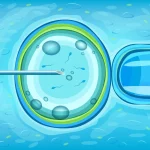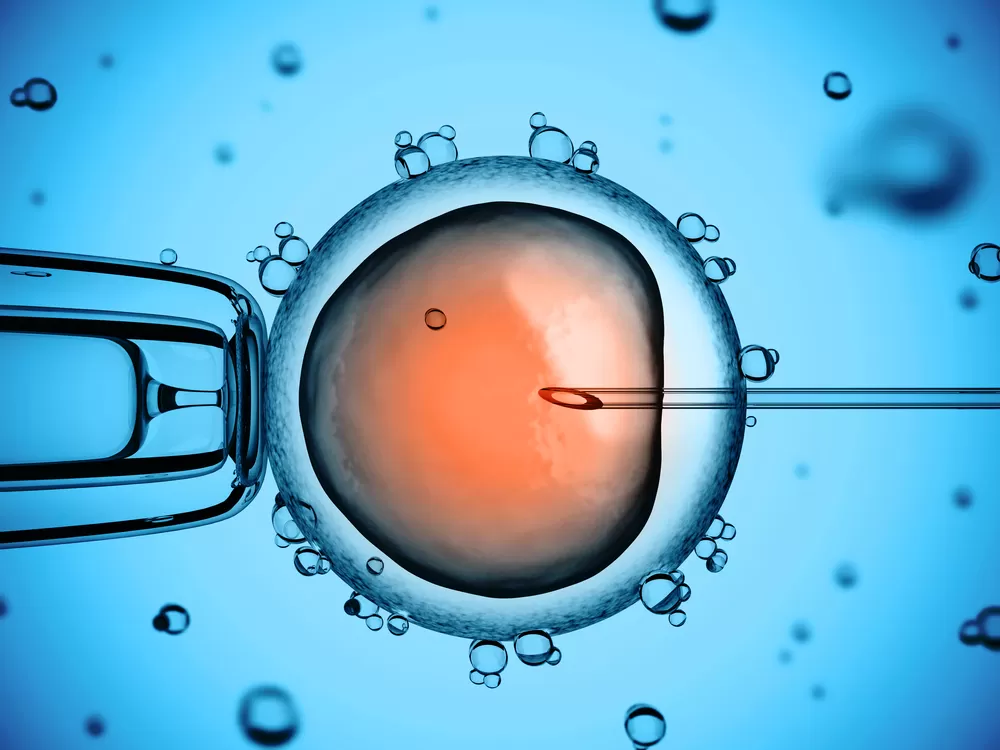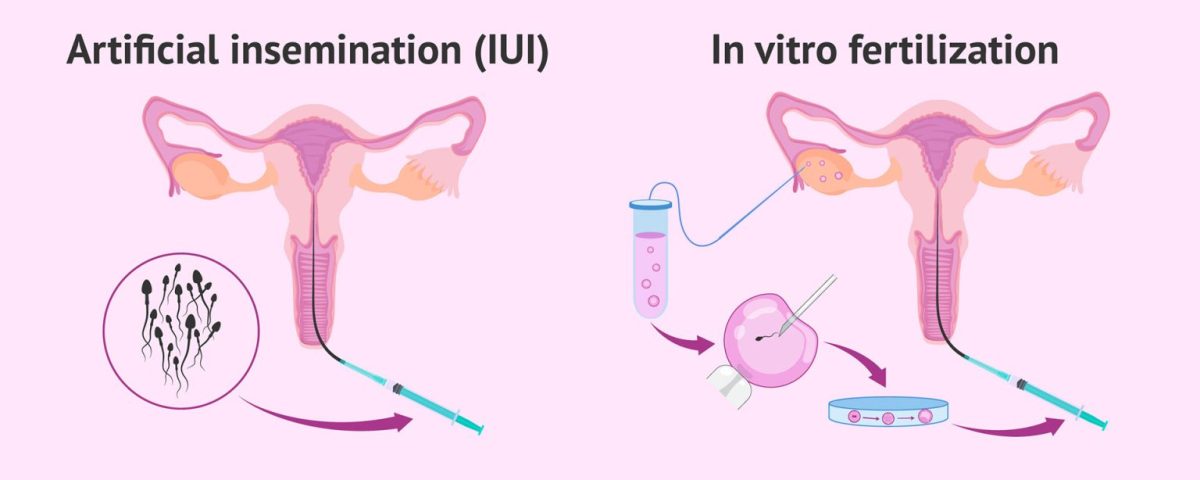
Boston IVF Syracuse: Your Guide to Fertility, Hope, and Starting a Family
April 17, 2025
The Art and Science of IVF: A Deep Dive into In Vitro Fertilization
April 17, 2025Artificial Insemination vs. IVF: What You Need to Know to Start Your Journey
Hey there! If you’re reading this, chances are you’re exploring ways to grow your family and stumbled across terms like artificial insemination and IVF. Maybe you’ve heard whispers about these options from a friend, seen a celebrity share their fertility story, or just want to know what’s out there. Either way, you’re in the right place! We’re diving deep into artificial insemination (AI) and in vitro fertilization (IVF)—two big players in the fertility world—to help you figure out what’s what.
This isn’t just a boring rundown of medical facts (promise!). We’ll uncover hidden details—like how some people use quirky rituals to boost their chances—and share practical tips you won’t find everywhere. Plus, we’ve got the latest scoop from science to back it up. So grab a snack, get comfy, and let’s break it all down together!
What Are Artificial Insemination and IVF, Anyway?
Let’s start with the basics. Both artificial insemination and IVF are ways to help people get pregnant when nature needs a little nudge. But they’re not the same, even though they both fall under the umbrella of fertility treatments. Think of them like two different recipes for your favorite dessert—they might get you to the same sweet result, but the ingredients and steps are totally different.
Artificial Insemination: The Quick Intro
Artificial insemination, often called AI or IUI (intrauterine insemination), is like giving sperm a VIP pass to meet the egg. Instead of relying on chance during regular intimacy, a doctor uses a thin tube to place sperm directly into the uterus. It’s timed to happen right when you’re ovulating—aka when your egg is ready to party.
- Fun Fact: Did you know AI isn’t just for humans? Farmers have been using it for years to breed cows and horses! It’s wild to think a technique for livestock is now helping people build families.
- Who Uses It?: Couples with mild sperm issues, single women, or same-sex couples using donor sperm often start here.
IVF: The Big Picture
In vitro fertilization, or IVF, is a bigger deal. “In vitro” means “in glass,” so picture this: eggs and sperm meet in a lab dish (not your body!), and then the doctor transfers the fertilized embryo back into the uterus. It’s like a science experiment with a happy ending—hopefully a baby!
- Cool Tidbit: The first IVF baby, Louise Brown, was born in 1978. She’s not even 50 yet, but her birth changed everything!
- Who Goes For It?: IVF is often the go-to for trickier cases—like blocked fallopian tubes or when AI doesn’t work.
Why It Matters to You
Knowing the difference is step one. AI is simpler and cheaper, but IVF has higher success rates. Which one’s right? That depends on your story—and we’ll get into that soon!
How Do They Work? A Step-by-Step Peek
Curious about what actually happens? Let’s walk through both processes like we’re backstage at a show. Spoiler: there’s no magic wand, but the science is pretty cool.
Artificial Insemination: The Play-by-Play
Here’s how AI rolls:
- Ovulation Check: Your doctor tracks when you’re ovulating—sometimes with meds to boost egg production.
- Sperm Prep: The sperm (from a partner or donor) gets “washed” to pick the strongest swimmers.
- The Big Moment: A thin catheter slips the sperm into your uterus. It’s quick—think 5-10 minutes—and you’re done!
- Waiting Game: You chill for two weeks, then take a pregnancy test.
- Real-Life Twist: Some folks swear by quirky rituals, like lying upside down after the procedure to “help the sperm swim.” No science backs this, but it’s a cute superstition!
IVF: The Full Scoop
IVF is more involved—here’s the rundown:
- Egg Boost: You take meds for about two weeks to make your ovaries pump out multiple eggs.
- Egg Pickup: A doctor uses a needle (don’t worry, you’re asleep!) to grab those eggs from your ovaries.
- Lab Magic: Eggs and sperm meet in a dish. Sometimes, they use a tiny needle (ICSI) to inject sperm directly into an egg.
- Embryo Transfer: After a few days, the best embryo gets placed in your uterus.
- Fingers Crossed: Two weeks later, a test tells you if it worked.
- Hidden Gem: Ever wonder what happens to extra embryos? Some people freeze them for later, donate them, or even use them for research. It’s a big decision!
Side-by-Side Comparison
| Step | Artificial Insemination (AI/IUI) | In Vitro Fertilization (IVF) |
|---|---|---|
| Where It Happens | Inside your body | In a lab, then your body |
| Time | One quick visit | Weeks of prep and multiple visits |
| Invasiveness | Minimal—just a catheter | Surgery for egg retrieval |
| Meds | Optional, light if used | Heavy-duty hormone shots |
Who’s a Good Fit for Each?
Not every treatment fits every person. Let’s break down who might lean toward AI or IVF based on what’s going on.
Artificial Insemination: Your People
AI is often the first stop for:
- Mild Male Issues: Low sperm count or slow swimmers? AI gives them a shortcut.
- Cervical Problems: If your cervix is blocking sperm, AI skips that hurdle.
- Single Moms-to-Be or Same-Sex Couples: Using donor sperm? AI’s a popular pick.
- Unexplained Infertility: When docs can’t pinpoint why, AI’s a low-key test run.
- Pro Tip: Younger women (under 35) tend to have better luck with AI since their eggs are usually in top shape.
IVF: The Heavy Hitter
IVF steps in when things get trickier:
- Blocked Tubes: If your fallopian tubes are out of commission, IVF bypasses them.
- Older Age: Over 35? Egg quality drops, and IVF can help by picking the best ones.
- Endometriosis or PCOS: These conditions mess with fertility—IVF tackles them head-on.
- Failed AI: If AI doesn’t work after a few tries, IVF’s the next level.
- Surprise Stat: A 2023 study from the American Society for Reproductive Medicine found IVF success rates hit 40-50% per cycle for women under 35—way higher than AI’s 10-20%.

Success Rates: What Are Your Odds?
Let’s talk numbers—because who doesn’t want to know their chances?
Artificial Insemination Success
AI’s success depends on a lot:
- Age: Under 35? You’re looking at 10-20% per cycle. Over 40? It drops to 5% or less.
- Sperm Quality: Better sperm = better odds.
- Tries: Most folks need 3-6 cycles before it clicks—or they move to IVF.
- Real Talk: “It’s like rolling dice,” says Dr. Jane Miller, a fertility expert. “Each try boosts your odds, but it’s not a sure thing.”
IVF Success
IVF’s got a stronger track record:
- Under 35: 40-50% per cycle.
- 35-40: 25-35%.
- Over 40: 10-15%, though donor eggs can bump it back up.
- Fresh vs. Frozen: Frozen embryos are just as good these days—sometimes better!
- Latest Data: A 2024 report from the CDC showed IVF with genetic testing (PGT) can push success rates even higher by picking healthier embryos.
What Boosts Your Chances?
✔️ For AI: Stay relaxed—stress can mess with ovulation.
✔️ For IVF: Healthy weight and no smoking help embryos stick.
❌ For Both: Don’t bank on one try—patience is key!
Costs: What’s the Damage?
Money’s a biggie, right? Let’s lay it out plain and simple.
Artificial Insemination Price Tag
AI is the budget-friendly option:
- Per Cycle: $300-$1,000 (without meds). Add $200-$500 if you need ovulation drugs.
- Donor Sperm: Tack on $500-$1,000 per vial.
- Total: Most folks spend $1,000-$3,000 over a few tries.
- Hack: Some clinics offer “multi-cycle” discounts—ask about it!
IVF Price Tag
IVF’s a bigger investment:
- Per Cycle: $12,000-$15,000 (meds included, it’s $15,000-$20,000).
- Extras: Genetic testing? Add $3,000. Frozen embryo storage? $500/year.
- Insurance: Only 19 U.S. states mandate coverage—check yours!
- Secret Saver: Look into fertility grants or loans—groups like BabyQuest Foundation help cover costs.
Cost Breakdown
| Treatment | Base Cost Per Cycle | With Meds/Extras | Typical Total (3 Cycles) |
|---|---|---|---|
| AI/IUI | $300-$1,000 | $500-$1,500 | $1,500-$4,500 |
| IVF | $12,000-$15,000 | $15,000-$20,000 | $15,000-$60,000 |
The Emotional Rollercoaster: What No One Tells You
Fertility treatments aren’t just about your body—they hit your heart, too. Here’s the stuff you won’t find in a pamphlet.
Artificial Insemination Vibes
- The Highs: It’s quick, low-stress, and feels “natural” since fertilization happens inside you.
- The Lows: Waiting two weeks for a test can feel like forever. And if it fails, the “what’s next?” question looms.
- Fan Fave: Some people keep a lucky charm—like a special sock—during the procedure for good vibes!
IVF Real Talk
- The Highs: Seeing your embryo on a screen is wild—like a sneak peek at your future kid.
- The Lows: Shots, bloating, and mood swings from hormones can wear you down. Plus, the stakes feel higher.
- Weird Trend: Couples sometimes name their embryos (think “Embry McEmbryo”) to feel connected.
- Expert Insight: “IVF is a marathon, not a sprint,” says Dr. Sarah Chen, a reproductive psychologist. “Build a support squad—it makes a difference.”
Coping Tips
✔️ Journal your feels—it’s cheaper than therapy!
✔️ Find a buddy who’s been there—they get it.
❌ Don’t bottle it up—talking helps.

Risks and Side Effects: What to Watch For
No treatment’s perfect. Here’s what might pop up.
Artificial Insemination Risks
- Mild Stuff: Cramping or spotting after the procedure—totally normal.
- Rare: Infection (super uncommon) or twins if you use ovulation meds (about 10% chance).
- Heads-Up: Overdoing cycles (more than 6) rarely works—time to rethink.
IVF Risks
- Common: Bloating, headaches, or bruising from shots.
- Serious: Ovarian hyperstimulation syndrome (OHSS)—your ovaries overreact (1-5% risk). Or multiples (20-30% with two embryos).
- New Research: A 2024 study in Fertility and Sterility found long-term health risks (like heart issues) are tiny but worth discussing with your doc.
How to Handle It
✔️ AI: Rest after the procedure—think Netflix and chill.
✔️ IVF: Watch for OHSS signs (swelling, pain)—call your doc if it’s bad.
❌ Don’t ignore weird symptoms—better safe than sorry.
The Latest Buzz: What’s New in 2025?
Fertility tech is always evolving. Here’s what’s hot right now:
- AI Boost: Some clinics use AI (the tech kind!) to time insemination better—early studies show a 5-10% success bump.
- IVF Upgrades: Mini-IVF (fewer meds, lower cost) is gaining fans. Success is slightly lower, but it’s gentler on your body.
- Frozen Edge: Frozen embryo transfers now outpace fresh ones—better scheduling, better outcomes.
- Stat Alert: A 2025 report from the Society for Assisted Reproductive Technology says frozen IVF cycles hit a 55% success rate for under-35s—huge news!
Which One’s Right for You? A Decision Guide
Still torn? Let’s make it personal.
Questions to Ask Yourself
- What’s My Budget? AI’s cheaper—can you swing IVF?
- How Old Am I? Younger? AI might work. Older? IVF’s stronger.
- What’s the Issue? Mild sperm trouble? Try AI. Big roadblocks? IVF.
- How Patient Am I? AI takes multiple tries—IVF’s faster but intense.
Steps to Decide
- Chat with Your Doc: Get a fertility workup—sperm, eggs, tubes, all of it.
- Weigh the Feels: Are you cool with shots and surgery (IVF) or want it simple (AI)?
- Plan B: If AI flops, are you ready for IVF?
- Wise Words: “Start where you’re at, not where you wish you were,” advises Dr. Mark Evans, an OB-GYN with 20 years in fertility.

Real Stories: What It’s Like
Let’s hear from folks who’ve been there.
- Jess, 32 (AI): “I did three rounds of IUI. The first two were a letdown, but the third? I’m 6 months pregnant now! I ate pineapple core after each try—random, but it felt lucky.”
- Mike & Tara, 38 (IVF): “IVF was rough—shots every day, Tara crying over nothing. But when we saw our twins on the ultrasound? Worth it.”
These stories show it’s not all smooth sailing, but the payoff can be huge.
Extra Tips You Won’t Find Everywhere
Here’s some bonus advice to rock your journey:
✔️ Diet Hack: Load up on antioxidants (berries, nuts)—a 2024 study linked them to better sperm and egg health.
✔️ Sleep Matters: Aim for 7-8 hours—poor sleep tanks fertility hormones.
❌ Skip the Hot Tub: Guys, heat kills sperm—save the soak for later!
✔️ Mindfulness: Yoga or meditation cuts stress—studies say it ups your odds by 10%.
Let’s Chat: What’s Your Take?
Whew, we covered a lot! Now it’s your turn. What’s on your mind? Are you leaning toward AI or IVF? Got a question we didn’t hit? Drop it in the comments—we’re here to help. Or share your story—did a lucky charm work for you? Let’s keep this convo going!
